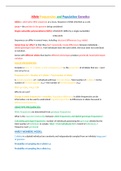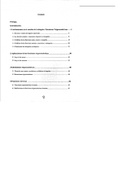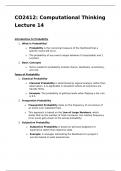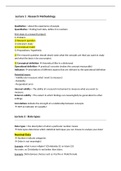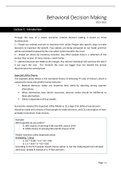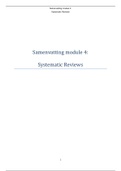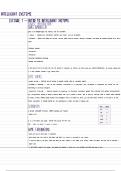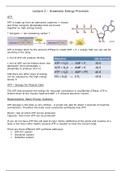Alleles = alternative DNA sequences at a locus. Sequence of DNA inherited as a unit.
Locus = the position in the genome being considered
Single nucleotide polymorphisms (SNPs): ATACGATC (differ by a single nucleotide)
ATACAATC
Sequences can differ in several ways, including structural differences (e.g. indels)
Genes have no ‘effect’ in that they don’t necessarily create differences between individuals –
alleles/genotypes have effects. If all individuals have the same allele, the locus does not contribute
to variation.
Genes with different alleles that lead to different phenotypes produce genetically based phenotypic
variation.
ALLELE FREQUENCIES:
Consider a locus ‘A’: 2 alleles, A and a. Frequency of A is the proportion of all alleles that are A (and
vice versa for a).
Frequency of A = Number of A alleles ÷ Total number of alleles
A diploid population of N individuals will have 2N total alleles. Total number of A alleles = 2x the
number of AA homozygotes (nAA) + the number of Aa heterozygotes (nAa)
F(A) = p = (2nAA + NAa) ÷ 2N
Why do we care?
Change in allele frequencies = evolution. Population differences in allele frequencies can be
informative: can be used to understand migration/gene flow & differences in alleles favoured in
different environments.
GENOTYPE FREQUENCIES:
Allele frequencies are determined from genotype frequencies.
What is the expected relationship between allele frequencies and diploid genotype frequencies?
Calculating genotype frequencies: number of individuals possessing the genotype divided by the
total number of individuals in sample: f(AA) = # AA individuals/N (N: total # of individuals, f:
frequency each genotype)
HARDY WEINBERG MODEL:
2 alleles in a diploid individual are randomly and independently sampled from an infinitely large pool
of gametes
Probability of sampling the A allele is p
Probability of sampling the a allele is q
, Assumption: population is large, randomly mating, not affected by mutation, migration or natural
selection
Prediction: the allelic frequencies of a population do not change
Prediction: the genotypic frequencies are simply the product of allele frequencies, and reach these
frequencies in a single generation
P2: homozygous A (AA)
q2: homozygous a (aa)
2pq: heterozygous allele frequency (Aa)
Genotypic frequencies at Hardy-Weinberg Equilibrium:
Do we expect all populations to have genotype frequencies given by the Hardy-Weinberg model? –
No, the H-W model makes a lot of assumptions. When these assumptions are violated, populations
may deviate from these expected proportions.
NON-RANDOM MATING AFFECTS THE GENOTYPIC FREQUENCIES OF A POPULATION:
Positive assortative mating: a tendency of like individuals to mate
Negative assortative mating: a tendency of unlike individuals to mate
Inbreeding:

